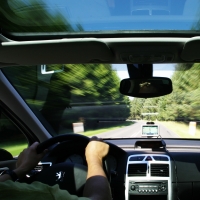Is Connecting Your Mobile Phone to Your Car a Smart Idea?

Deals among automakers, wireless carriers, and tech companies are fueling a race to make new cars smarter through wireless connectivity. The connected car is a big part of the machine-to-machine (M2M) space being targeted by mobile providers.
According to the latest report issued by the GSMA and conducted by research firm SBD, the global-connected car market is predicted to be worth approximately $40 billion in 2018, up from $13 billion in 2012. Consumers love their smartphones and tablets, and as adoption increases, carriers are betting that users ultimately want their personalization and custom settings from their mobile devices to transfer to other devices in their lives—especially their cars.
Major wireless carrier Sprint recently announced a deal to integrate IBM’s MessageSight technology with its Sprint Velocity Service Bus, a connected vehicle platform that lets smartphones, tablets, and other devices communicate through the cloud.
How smart will the new connected car be? In addition to infotainment features, security, navigation, emergency services, and engine diagnostics, according to Sprint, preferences such as seat position, cabin temperature, and radio stations can be stored in the cloud, updated, and synched via the driver's smartphone every time the car is turned on.
Users can use their smartphone to find directions, which are then sent to the car's navigation system so when the car is turned on, the directions are queued up and ready to go. An internal navigation system will capture route and travel preferences in the cloud and, based on time of day and traffic alerts, suggest alternate routes.
However, some think putting the brakes on the rush to smartphones on wheels may be in order.
MIT Technology Review commented that cars with high-speed, always-on, wireless connectivity may be “setting up both new kinds of services and a higher potential for distraction and malfeasance.”
As more wireless functions are added to cars, the risk of driver distraction rises. In April, the National Highway Traffic Safety Administration released guidelines for limiting the functions of electronic systems in cars. Defining distraction can be difficult, though. The new guidelines, for example, don’t apply to smartphones or other devices connected to a car’s "infotainment" system. And last month, a study conducted by AAA found that voice-controlled applications can be just as distracting as texting behind the wheel.
The FCC stated, “The popularity of mobile devices has had some unintended and even dangerous consequences. We now know that mobile communications is linked to a significant increase in distracted driving, resulting in injury and loss of life.”
Distraction.gov is the US Government website for distracted driving. It’s no surprise that texting is cited as “the most alarming” distraction. However, using a navigation system is also regarded as an activity that distracts a driver.
Unfortunately, as I can personally attest based on a recent trip to the mountains, neither car nor smartphone navigation apps always work when you most need them.

